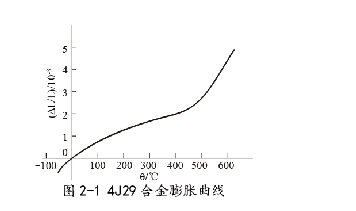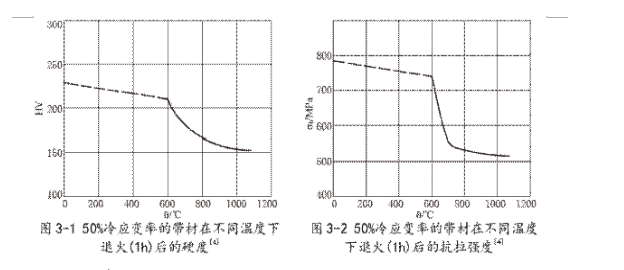Product classification

4J29 precision alloy
4J29 alloy, also known as Kovar alloy, has a linear expansion coefficient similar to that of silicon-boron hard glass in the temperature range of 20 to 450°C. It has a relatively high Curie point and good low-temperature structural stability. The oxide film of the alloy is dense and can be well wetted by glass. It does not react with mercury, making it suitable for use in instruments that discharge mercury. It is a primary sealing structural material for electronic vacuum devices.
Classification:
Key words:
Superalloy | Inkenel | Hastelloy | Inkloy | Precision Alloy Series
Product Parameters
4J29
Material grade: 4J29 precision alloy
1.Overview of 4J29 precision alloy:
The 4J29 alloy, also known as Kovar alloy, has a linear expansion coefficient similar to that of silicon-boron glass in the temperature range of 20 to 450°C, a relatively high Curie point, and good low-temperature microstructure stability. The oxide film of the alloy is dense and can be well wetted by glass. It does not react with mercury, making it suitable for use in instruments that discharge mercury. It is a primary sealing material for electronic vacuum devices.
1. 4J29 material grade: 4J29.
2. Similar grades to 4J29: see Table 1-1.
Table 1-1[1-4]
| Russia | USA | UK | Japan | France | Germany |
| 29HК | Kovar | Nilo K | KV-1 | Dilver P0 | Vacon 12 |
| 29HК-BИ | Rodar Techallony Glasseal 29-17 |
Telcaseal | KV-2 KV-3 | Dilver P1 | Silvar 48 |
3. Technical standards for 4J29 material:
4. Chemical composition of 4J29: see Table 1-2.
Table 1-2 %
| C≤ | Si≤ | Mn≤ | P≤ | S≤ | Cr≥ | Ni≥ | Mo≥ | Cu≤ |
| 0.03 | 0.30 | 0.50 | 0.020 | 0.020 | - | 28.5-29.5 | - | 0.20 |
| Others | Al≤ | Ti≤ | Fe≤ | Co≤ | V≤ | W≤ | Nb≤ | N≤ |
| - | - | Remaining | 16.8-17.8 | - | - | - |
Under the condition that the average linear expansion coefficient meets the standard requirements, deviations in nickel and cobalt content from the ranges specified in Table 1-2 are allowed. The contents of aluminum, magnesium, zirconium, and titanium should not exceed 0.10% each, and their total should not exceed 0.20%.
5. Heat treatment system for 4J29: The performance test samples for the specified expansion coefficient and low-temperature microstructure stability are heated in a hydrogen atmosphere to 900°C ± 20°C, held for 1 hour, then heated to 1100°C ± 20°C, held for 15 minutes, and cooled to below 200°C at a rate not exceeding 5°C/min.
6. Varieties, specifications, and supply status of 4J29: Varieties include wire, strip, plate, tube, and bar.
7. Melting and casting process of 4J29: Melted using non-vacuum induction furnace, vacuum induction furnace, or electric arc furnace.
8. Overview of applications and special requirements for 4J29: This alloy is a typical Fe-Ni-Co hard glass sealing alloy widely used internationally. It has been used for a long time in aviation factories, with stable performance. It is mainly used for glass sealing in electronic vacuum components such as electron tubes, oscillators, igniters, magnetrons, transistors, sealed plugs, relays, lead wires for integrated circuits, chassis, shells, brackets, etc. In applications, the selected glass should match the expansion coefficient of the alloy. The low-temperature microstructure stability should be strictly tested according to the operating temperature. Appropriate heat treatment should be carried out during processing to ensure that the material has good deep drawing and stretching performance. When using forged materials, their airtightness should be strictly tested.
2.,Physical and chemical properties of 4J29:
1. Thermal properties of 4J29:
(1) Melting temperature range of 4J29: The melting temperature of this alloy is approximately 1450°C.[1,2].
(2) Thermal conductivity of 4J29: see Table 2-1.
Table 2-1[1]
| θ/℃ | 100 | 200 | 300 | 400 | 500 |
| λ/(W/(m·℃)) | 20.6 | 21.5 | 22.7 | 23.7 | 25.4 |
(3) Specific heat capacity of 4J29: At 0°C, the specific heat capacity is 440J/(kg•℃); at 430°C, the specific heat capacity is 649J/(kg•℃).
(4) Linear expansion coefficient of 4J29: The standard specifies α1(20~400℃)=(4.6~5.2)×10-6℃-1; α1(20~450℃)=(5.1~5.5)×10-6℃-1(The upper limit when used for transistors is 5.6×10-6℃-1)。The average linear expansion coefficient of the alloy is shown in Table 2-2. The expansion curve of the alloy is shown in Figure 2-1.
2、4J29 Density:
3、4J29 Electrical Properties:
(1)、4J29 Resistivity: ρ=0.48μΩ·m[1,5].
Table 2-2[1]
| θ/℃ | θ/℃ | ||
| 20~60 | 7.8 | 20~500 | 6.2 |
| 20~100 | 6.4 | 20~550 | 7.1 |
| 20~200 | 5.9 | 20~600 | 7.8 |
| 20~300 | 5.3 | 20~700 | 9.2 |
| 20~400 | 5.1 | 20~800 | 10.2 |
| 20~450 | 5.3 | 20~900 | 11.4 |

(2)、4J29 Temperature Coefficient of Resistance: See Table 2-3.
Table 2-3[1]
| Temperature Range/℃ | 20~50 | 20~85 | 20~100 | 20~200 | 20~300 | 20~400 |
| αR/10-3℃-1 | 3.7 | 3.7 | 3.9 | 3.9 | 3.7 | 3.3 |
4、4J29 Magnetic Properties:
(1)、4J29 Curie Point: Tc=430℃[1,5].
(2)、4J29 Alloy Magnetic Properties: See Table 2-4[1].
At 4000A/m, the residual magnetic induction Br=0.98T, coercive force Hc=68.8A/m[1,2].
5、4J29 Chemical Properties: The alloy has good corrosion resistance in the atmosphere, fresh water, and seawater.
Table 2-4[1,2]
| H/(A/m) | B/T | H/(A/m) | B/T | H/(A/m) | B/T |
| 8 | 0.9×10-2 | 80 | 0.35 | 2000 | 1.47 |
| 16 | 2.1×10-2 | 160 | 0.81 | 4000 | 1.61 |
| 24 | 3.6×10-2 | 400 | 1.17 | ||
| 40 | 8.3×10-2 | 800 | 1.34 |
Three,4J29 Mechanical Properties:
1、4J29 Performance as Specified in Technical Standards:
(1)、4J29 Hardness: The hardness of deep-drawn strip should meet the requirements of Table 3-1. No hardness test is required for thickness not exceeding 0.2mm.
(1)、4J29 Tensile Strength: The tensile strength of wire and strip should meet the requirements of Table 3-2.
Table 3-1
| State | δ/mm | Hardness HV |
| Deep-drawn state | >2.5 | ≤170 |
| ≤2.5 | ≤165 |
Table 3-2
| State Code | State | σb/MPa | |
| Wire | Strip | ||
| R | Soft State | <585 | <570 |
| 1/4I | 1/4 Hard State | 585~725 | 520~630 |
| 1/2I | 1/2 Hard State | 655~795 | 590~700 |
| 3/4I | 3/4 Hard State | 725~860 | 600~770 |
| I | Hard State | >850 | >700 |
2、4J29 Mechanical Properties at Room Temperature and Various Temperatures:
(1)、4J29 Hardness: The hardness of strip with a cold strain rate of 50% at different annealing temperatures is shown in Figure 3-1.
(2)、4J29 Tensile Properties: The tensile properties of the alloy (annealed state) at room temperature are shown in Table 3-3. The tensile properties of strip with a cold strain rate of 50% at different annealing temperatures are shown in Figure 3-2.
Table 3-3[1,5]
| σb/MPa | σP0.2/MPa | δ/% |
| 520 | 330 | 30 |

3、4J29 Durability and Creep Properties:
4、4J29 Fatigue Properties:
5. 4J29 Elastic Properties: 4J29 Elastic Modulus: E=138GPa.
Four,4J29 Microstructure:
1. 4J29 Phase Transformation Temperature: The γ→α phase transformation temperature is below -80℃.
2. 4J29 Time-Temperature-Microstructure Transformation Curve:
3. 4J29 Alloy Microstructure: The alloy should be treated according to the heat treatment system specified in 1.5, and then frozen at -78.5℃ for no less than 4 hours without the appearance of martensitic structure. However, when the alloy composition is inappropriate, different degrees of austenite (γ) to needle-like martensite (α) transformation will occur at room temperature or low temperature, accompanied by a volume expansion effect during the phase transformation. The expansion coefficient of the alloy increases accordingly, leading to a significant increase in the internal stress of the sealing components, and even causing partial damage. The main factor affecting the low-temperature microstructure stability of the alloy is the chemical composition of the alloy. From the Fe-Ni-Co ternary phase diagram, it can be seen that nickel is the main element stabilizing the γ phase, and a higher nickel content is beneficial for the stability of the γ phase. As the total deformation rate of the alloy increases, its microstructure tends to become more stable. Alloy segregation may also cause local γ→α phase transformation. In addition, coarse grains can promote the γ→α phase transformation.
4. 4J29 Grain Size: The standard specifies that the grain size of deep-drawn strip should not be less than level 7, and the grains smaller than level 7 should not exceed 10% of the area. For strips with a thickness of less than 0.13mm, when estimating the average grain size, the number of grains along the thickness direction of the strip should be no less than 8.
For thick strips with a cold strain rate of 60% to 70%, annealed for 1 hour at the temperature shown in Table 4-1, and air-cooled, the grain size is rated according to YB 027-1992 Appendix A, as shown in Table 4-1.
Table 4-1[1,2]
| Annealing Temperature/℃ | 675 | 700 | 750 | 800 | 900 | 1000 | 1100 | 1200 |
| Grain Size Level | Start of Recrystallization | >10 | >10 | 10 | 7.5 | 5.0 | 4.0 | 3.0 |
Previous Page
Next Page
Previous Page
4J36 precision alloy
Next Page
Related Products
Product Consulting
Leave your contact information to get a free product quote!







